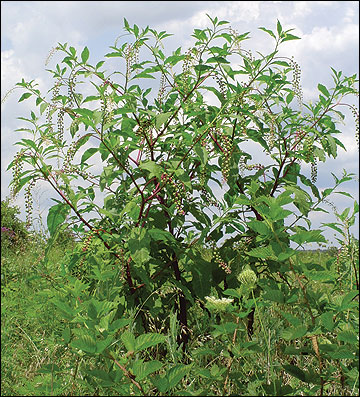Pokeweed
- Phytolacca americana
- Poke, Poke salad
Forb
Plants are tall (more than 5 feet) with a robust stem and spreading canopy.
Scott Sudkamp, Missouri Department of Conservation
Description
Pokeweed is common throughout the Midwest, and its size and fruit draw attention. This plant of disturbed areas, fallow fields and woodland edges may grow 6-8 feet tall. Leaves are smooth, oblong and usually 6 to 8 inches in length, though they may grow up to 12 inches. Stems turn bright purple as the plant matures. Clusters of succulent, shiny purple berries, about 1/4 inch in diameter, occur at the tops of the plants.
Caution
The berries of this plant are poisonous to humans, as are the roots, stems and uncooked leaves.
Bloom period
May to October
Use by bobwhites
Like many other birds, bobwhites are fond of pokeweed berries. Maturing in the summer, they may feed juvenile quail as well as adults. Where several plants grow in a cluster, the shade produces summer thermal cover for quail.





